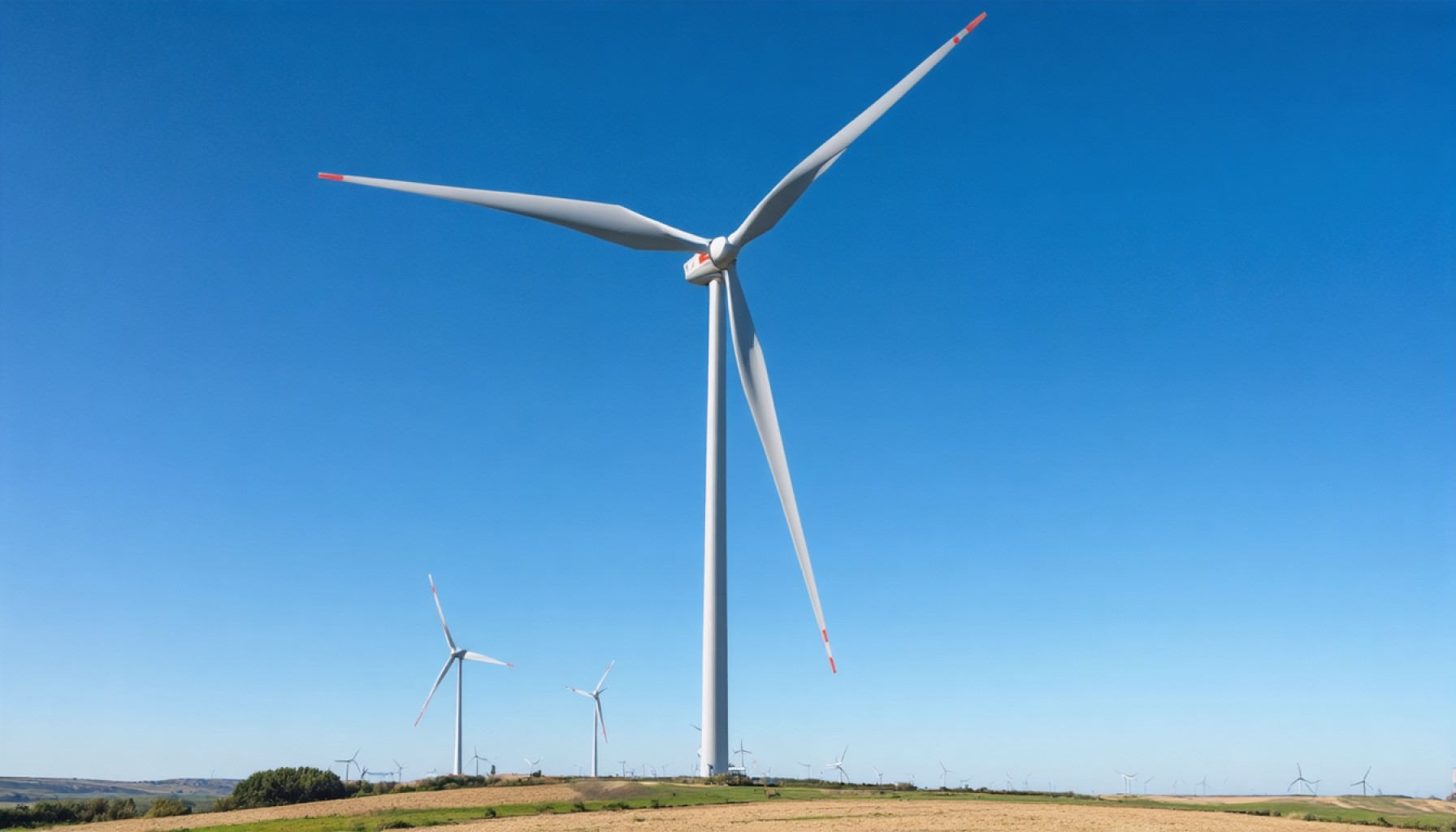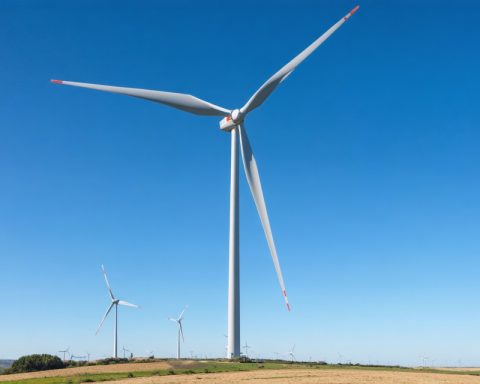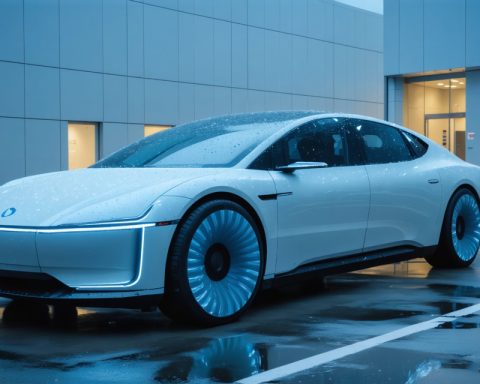- Siemens Gamesa has installed a groundbreaking 21.5MW offshore wind turbine off Denmark’s coast, becoming a significant milestone in Europe’s renewable energy sector.
- The turbine’s colossal rotor diameter of 276 meters exemplifies cutting-edge European engineering, setting a benchmark amid global competition.
- Serving as a testbed for future innovations, the project aims to position Siemens Gamesa at the forefront of industry advancements despite challenges from Chinese manufacturers.
- Chinese competitors, such as Dongfang Electric and MingYang, are pushing boundaries with larger 26MW installations, fostering a competitive landscape.
- Larger turbines pose logistical and maintenance challenges, testing long-term feasibility and efficiency.
- Siemens Gamesa’s initiative represents a strategy to balance innovation with practicality, addressing past industry setbacks.
- The installation underscores Europe’s commitment to renewable energy leadership and the ongoing quest to challenge Chinese market presence.
Amidst the swirling winds of Denmark’s coast, a colossal new player emerges, casting a long shadow over the North Sea. Siemens Gamesa has triumphantly installed its groundbreaking 21.5MW offshore wind turbine, marking a pivotal moment in Europe’s renewable energy saga. In the face of formidable competition from Chinese giants, this installation signals not just a technological feat, but a spirited comeback.
Towering against the skyline, this behemoth boasts a rotor diameter stretching 276 meters. For perspective, that’s about three football fields laid end to end, harnessing the relentless gusts with unparalleled poise. Amid shimmering blades, poised technicians attend to the final tweaks, their expertise a crucial counterbalance to the machine’s prodigious power.
While the turbine currently serves as a formidable testament to European engineering, Siemens Energy maintains cautious optimism about its future. This installation is framed as a testbed—a proving ground for innovations that could define the industry’s next chapter. The Danish Energy Agency has already awarded a prototype certificate, a green light for Siemens Gamesa to fine-tune its creation until 2027.
In the backdrop, Chinese manufacturers loom large, brands like Dongfang Electric and MingYang advancing rapidly with even larger contributions. The titans of the east capture attention with their staggering 26MW installations, forcing their Western counterparts to redefine the boundaries of scale and efficiency.
Yet, the race to build ever-magnificent turbines is as much about strategic foresight as it is about raw power. Larger machines carry inherent challenges—daunting transportation, intricate installations, and a steep climb in maintenance demands. These hurdles cast shadows of doubt over the long-term viability of oversized turbines.
Past struggles with reliability and efficiency have cast Western manufacturers, including Siemens Gamesa, into the challenging roles of both innovators and pragmatists. Ensuring the new prototype’s success is crucial, a lesson learned from previous financial setbacks and production slowdowns across the industry.
The world watches skeptically, the path uncertain yet hopeful. This latest marvel could indeed reshape the playing field. Whether such mechanical giants will become the wind energy norm remains to be seen, yet this initiative reflects Europe’s steadfast determination to orchestrate a harmonious balance between audacity and practicality.
As Siemens Gamesa’s wind giant spins defiantly off Denmark’s coast, the narrative unfolds. The company’s latest achievement is not just about addressing China’s dominance; it’s about defining the future canvas of renewable energy. Europe has sent a powerful message, one that is sure to echo through the halls of progress and innovation for years to come.
Unveiling the Future: Siemens Gamesa’s Wind Giant and Its Impact on Renewable Energy
Market Forecasts & Industry Trends
The renewable energy sector continues to experience rapid growth, with offshore wind energy playing a pivotal role, especially in Europe. According to a report by the Global Wind Energy Council, global offshore wind capacity is expected to reach 234 GW by 2030, up from around 35 GW in 2020. This surge is driven by technological advancements, government policies, and growing environmental concerns.
Siemens Gamesa’s new 21.5MW turbine is indicative of this trend and reflects a strategic shift towards larger and more powerful wind turbines. This is a direct response to increasing competition from Chinese manufacturers, who are advancing rapidly with even larger turbines, such as Dongfang Electric’s and MingYang’s 26MW installations.
Features, Specs & Pricing
– Rotor Diameter: 276 meters, equivalent to three football fields.
– Output Capacity: 21.5 megawatts.
– Innovation Platform: Actively serves as a testbed for future technological advancements until 2027.
The turbine’s colossal size and capacity signify a major leap in offshore wind technology, potentially lowering the levelized cost of electricity (LCOE) by maximizing energy yields and improving efficiency.
Challenges & Controversies
Larger wind turbines present several challenges that cannot be overlooked:
– Transportation and Installation: Due to their enormous size, these turbines require specialized equipment and careful planning for transportation and installation, leading to higher costs.
– Maintenance Demands: Increased complexity necessitates more sophisticated maintenance strategies, thus presenting potential logistical and financial hurdles.
Despite these challenges, Siemens Gamesa is banking on overcoming past issues with reliability and efficiency to make their turbines a game-changer in the renewable energy sector.
Real-World Use Cases
Implementing such turbines can be transformative:
– Coastal Energy Supply: Ideal for European regions with significant coastlines, allowing for sustainable energy supply directly to the grid.
– Reduced Carbon Footprint: Large-scale implementations can significantly cut carbon emissions, progressing towards climate targets.
Insights & Predictions
As Siemens Gamesa tests and optimizes its prototype, several key insights emerge:
– Technological Leadership: Continued innovation may position Siemens Gamesa as a leader in offshore wind technology.
– Energy Independence: Europe’s push towards renewable energy via such advancements can reduce dependency on imported fossil fuels.
Actionable Recommendations
1. Invest in Innovation: Stakeholders in the renewable energy sector should prioritize R&D to enhance the efficiency and reliability of large-scale turbines.
2. Policy and Support Systems: Governments need to adapt policies that facilitate the logistics and financial models for these massive structures.
3. Comprehensive Risk Management: By identifying potential risks early, operators can mitigate the challenges associated with large turbine installations.
Additional Resources
Interested readers can explore more about renewable energy advancements through the Siemens Gamesa official website, the Global Wind Energy Council, or follow updates from the International Energy Agency.
Embrace the future of energy by staying informed and proactive in the renewable energy transformations reshaping the world.














